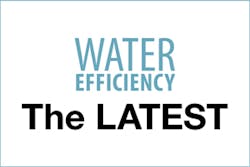State Water Board Adopts Order on Long-Term Management of Salton Sea
The State Water Resources Control Board today accepted a landmark agreement that defines the state’s commitment to restore and manage the Salton Sea to protect public health and critical Pacific flyway habitat.
Today’s action also outlines the board’s oversight role in monitoring and ensuring progress toward the goals of the Salton Sea Management Plan, which sets annual milestones for habitat restoration and dust-suppression projects over the next 10 years. Agreement on the plan was reached through discussions among a broad group of stakeholders led by the California Natural Resources Agency.
“Successful management of a smaller but sustainable Salton Sea requires active support and participation from local, state and federal governing bodies, and stakeholders,” said State Water Board Chair Felicia Marcus. “The annual milestones give us a roadmap to pick up the pace, and the annual public meeting will maintain transparency and keep a light shining on this hugely important effort and on all of us.”
The board’s action revises a 2002 order approving a long-term water transfer from the Imperial Irrigation District to the San Diego County Water Authority, the Coachella Valley Water District and the Metropolitan Water District of Southern California. Under terms of that order, water deliveries aimed at mitigating the Salton Sea’s receding shoreline are no longer required after this year.
The Salton Sea Management Plan, released earlier this year, outlines a range of measures to address the impacts of reduced water flows.
“We heard from residents of the Imperial and Coachella valleys, and understand the urgent need to improve air quality and maintain valuable habitat,” said State Water Board Member Joaquin Esquivel. “We are going to be monitoring the restoration work closely, and have identified cumulative milestones necessary to protect public health and the environment.”
California’s largest lake, the Salton Sea was formed when floodwaters flowed unchecked from the Colorado River into an ancient lakebed from 1905 to 1907. Since then the lake has been fed primarily with agricultural drain water from the Imperial Valley. While water levels have declined over the past decade, the lake will recede even more starting next year when water transfers from the Imperial Valley accelerate and mitigation water deliveries are no longer required.
The lake’s receding shoreline presents a public health risk due to particulate air pollution from dust blown from the exposed lakebed. At the same time, declining water levels will increase the lake’s salinity, threatening food sources for wildlife. Once known for its sport fishery and recreational uses, the lake is still a critical stop on the Pacific flyway for migrating birds, including several threatened and endangered species.
To address these impacts, the state’s 10-year plan calls for construction of 29,800 acres of ponds, wetlands and dust-suppression projects on portions of exposed lakebed. The plan outlines annual targets for completion, beginning with 500 acres in 2018 and ramping up to 4,200 acres in 2028. The agreement further commits the state to creating a long-term plan beyond the initial 10 years.
In accepting the multi-party agreement today, the State Water Board also defined its own oversight role. Every year, the board will hold a public meeting by March 31 to hear a progress report on the previous year, including updates on completed projects, amount of acreage, and financial resources. The plan identifies steps to be taken if the state fails to achieve those targets.
The state of California has committed more than $80 million in voter-approved bond funds to restore habitat and suppress dust at the lake in the near term. A $14 million grant from the state Wildlife Conservation Board helps to fund habitat conservation at the Salton Sea, and the Salton Sea Authority will administer a $7.5 million U.S. Department of Agriculture grant for water conservation, wetland creation, and air quality mitigation.
In addition, under SB 5 (de León et al) signed into law this year, a bond measure that would provide $200 million for Salton Sea projects will go before voters on the June statewide ballot in 2018.
Background
In 2002, the State Water Board issued an order that approved the long-term transfer of water from the Imperial Irrigation District to the San Diego County Water Authority, the Coachella Valley Water District and the Metropolitan Water District of Southern California. The 2002 order required the parties to provide additional water to the Salton Sea for 15 years as mitigation for the diminished irrigation flows resulting from the transfer order.
Longer-term restoration and management of the Salton Sea was contemplated by separate agreements and legislation, and the California Natural Resources Agency has been spearheading those efforts. In 2014, the Imperial Irrigation District filed a petition for change seeking modification of the long-term water transfer order.
In May 2015, Governor Edmund G. Brown, Jr. established the Salton Sea Task Force to identify realistic short and medium term goals to respond to potential air quality and ecological impacts resulting from scheduled reduced flows of fresh water to the Salton Sea. The State Water Board regularly monitors and assesses progress on the implementation of the Salton Sea Task Force’s Salton Sea Management Program, and has held six public workshops as part of this function.
